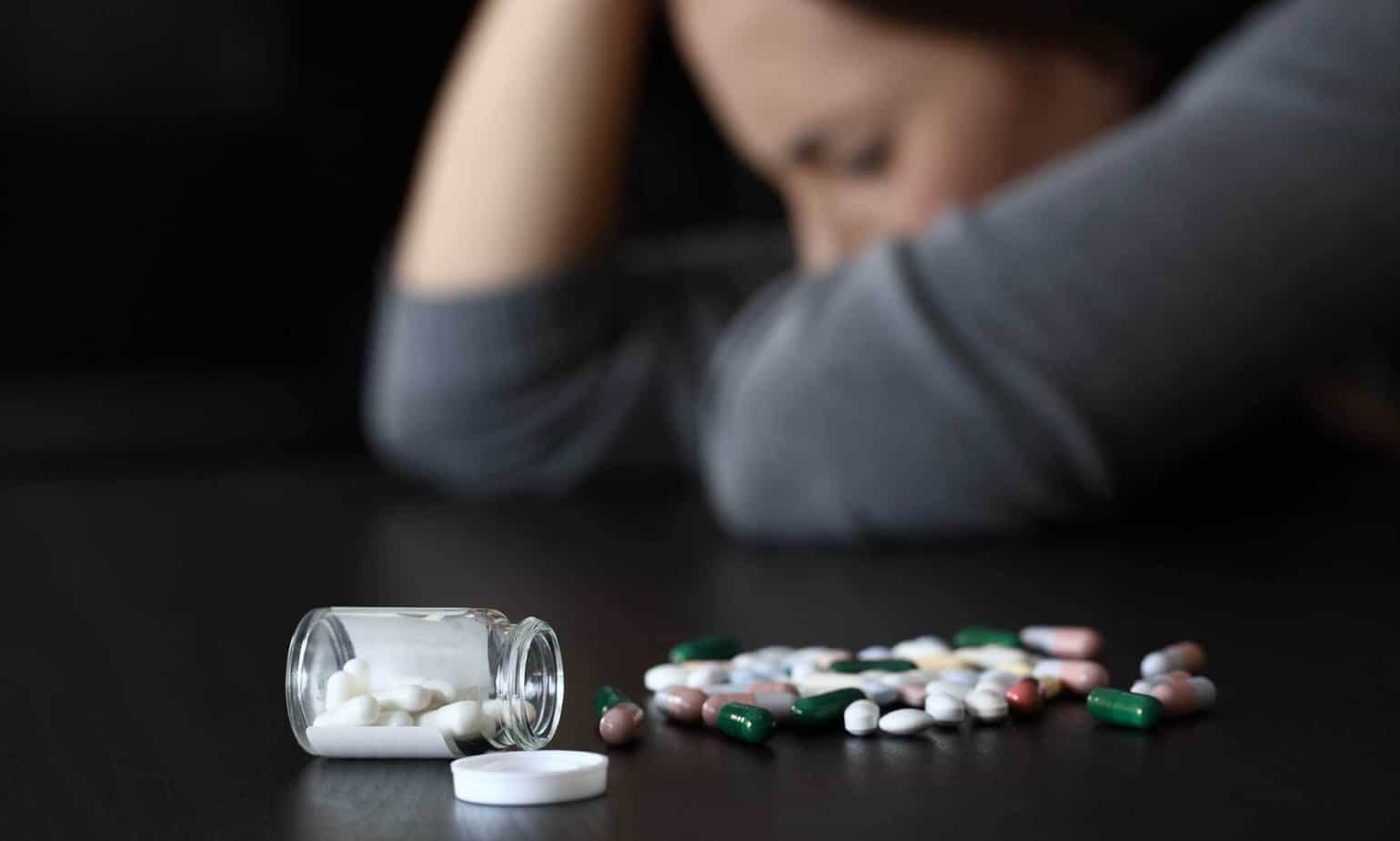Quitting drugs or alcohol is a powerful decision, but it may leave you feeling overwhelmed with uncertainty about the future. If you’re considering rehab, you might have some hesitations holding you back because you don’t know what to expect. However, understanding what the treatment process looks like can help you take on recovery with a confident mind. Continue reading to find out what happens during your stay at rehab and what a typical day looks like.
What is Rehab?
Rehab is a short name for inpatient treatment for substance use disorder. It is also known as residential treatment. Before you enter, detoxification is the first step. Detox is when your body purges alcohol and drugs from its system. During this stage, many people experience intense drug withdrawal symptoms as the body tries to stabilize itself. While medically monitored detox isn’t necessary in all instances, many people often transition from detox to a drug rehabilitation program. Often, these two programs are included in the same location.
The intention of inpatient or residential treatment is to remove you from your problematic environment and ensure you have a comfortable stay in a facility that lets you recover without distractions. Medical and clinical professionals teach you the tools and skills needed to pursue long-lasting, sustainable recovery. You will also begin the process of uncovering the root cause of your substance use, including identifying triggers.
There are many different types of drug rehab treatment programs, and each offers its own unique combination of therapy and treatment which we’ll discuss below.
Are There Different Kinds of Rehabs?
The short answer is yes. Generally, all substance abuse treatment residential programs design a personalized treatment approach to help people build a foundation for a substance-free life. Some rehabilitation centers, like Mountainside, might combine clinical treatment and wellness practices to provide a well-rounded approach. Medication-assisted treatment and 12-step fellowship may be integrated into your program as well.
Other facilities might offer gender-specific programs or ones catered to teens or adolescents. There are also rehabs that specialize in dual diagnosis treatment, which provides care for people who experience symptoms related to co-occurring mental health disorders alongside their substance use. Mental health disorders are often compounded, or made worse, by substance abuse which is why it’s important to treat them simultaneously. Based on surveys conducted at Mountainside, our clients who identified having symptoms related to depression saw a 65.9 percent reduction in those symptoms upon leaving treatment.
Most drug and alcohol rehabilitation programs last around 30 days, but once you leave treatment, that doesn’t mean your work is done. Recovery is a lifelong process that takes patience and dedication, so it’s up to you to apply the skills you learn in rehab to your daily life. If additional support is needed, there are outpatient programs that will guide you after residential rehabilitation.
What Happens During the Rehab Admissions Process?
If you’re new to rehab, you’re likely wondering how to choose the “right” substance use treatment facility. Start by doing extensive research and make a list of potential facilities based on location, cost, services and offerings, and any other factors that are important to you. If this feels like a daunting task, it may be a time to ask for support from your family.
After narrowing down your choices, you should contact the facilities on your list for a pre-intake screening. This might seem like a nerve-wracking experience, but compassionate staff members are waiting on the other line to help answer any questions and ensure your privacy. During this confidential call, be prepared to answer questions about:
- Drug and alcohol history
- Types of substances used
- Possible co-occurring disorders
- Medical history
- Family life
- Employment
- History of trauma or abuse
- Legal issues
It’s important to be completely honest with your answers so the admissions coordinator can determine the recovery option that will best suit your needs. Afterward, you might be ready to discuss insurance and financial options for treatment. If cost is one thing that has been holding you back from attending rehab, sometimes there are financial resources like sliding scales or scholarships. Many facilities accept common insurance providers and strive to be flexible when it comes to getting you the help you deserve.
What Does Residential Treatment Look Like?
Rehab involves extensive therapy, which aims to rectify drug-seeking behaviors, instill healthy coping mechanisms, and teach important relapse prevention skills. When determining your treatment plan, medical professionals consider all aspects of your overall mental and physical condition, previous substance use, family history, and more. Part of this plan may include the types of counseling groups and how often you will have them each week.
Clinical
Below are the types of therapy available in residential:
Individual Therapy
In individual therapy, you work one-on-one with a clinician to uncover the root causes of your substance use disorder. Your clinician aims to create a comfortable, trusting environment where you can openly share some of the most troubling thoughts and trauma you might have been suppressing.
A common therapy approach is psychoanalysis or psychotherapy, which involves exploring your personality and addressing your inner conflicts and repressed fears. Cognitive Behavioral Therapy (CBT) recognizes negative thought patterns and behaviors that led to substance use and replaces them with constructive, positive ones. Depending on your needs, you may be introduced to other modalities like Dialectical Behavioral Therapy (DBT) and Motivational Interviewing (MI). By using these treatment approaches, your clinician can get to the core of your mental health issues and identify links to your addiction.
Whether you want to learn how to better manage your triggers, self-regulate your emotions, or just live a healthier, sober lifestyle but are not sure how your clinician will guide you to success. Setting small goals and learning healthy coping mechanisms during individual therapy will give you a solid foundation for when you are ready to leave treatment.
Group Therapy
Group therapy is peer-based counseling led by a mental health professional who guides the conversation. One of the most important things to thrive in addiction recovery is having a strong support system. Listening and talking with other individuals who have similar experiences can help you feel accepted, understood, and a part of a welcoming community.
Some counseling groups may be focused on helping individuals overcome trauma or learn relapse prevention skills. At other times, there are more specialized groups for members of the LGBTQ+ community or ones specifically for men or women. 12-step groups, which are based on the literature from Alcoholics Anonymous, are also common. Some therapy groups follow a structured format while others are more flexible–it really depends on the facilitator.
Certain groups will not be the right fit for you, so work with your clinicians to find ones that resonate with you. One of the most important aspects of group therapy is hearing new perspectives that can inspire you on your own recovery journey. Actively participating in groups will teach you how to effectively communicate and create connections with others.
Family Therapy
Some rehabs offer family counseling services that focus on rebuilding trust and forming healthy communication strategies between you and your loved ones. Family therapy educates family members about the medical, behavioral, and psychological consequences of drug and alcohol use. This helps them become more familiar with the struggles you might face in recovery and more understanding of your substance use disorder.
The goal of family therapy is that while you work on recovery, your parents, spouse, siblings, or other family members will embark on their own healing journey parallel to yours. Therapists work with both sides to understand complex family dynamics and address any codependent behaviors that could be enabling your addiction. With everyone on the same page, you and your family can figure out the best way to move forward together to support your recovery.
Mountainside offers a series of online family wellness workshops to provide a space for family members to learn about some of the most pivotal aspects of addiction treatment and recovery.
Wellness
Mountainside, among some other rehabilitation centers, incorporates holistic therapies into your clinical treatment. Acupuncture may help ease withdrawal symptoms like anxiety and cravings. Other movement-based therapies such as yoga and qigong can stimulate your immune system and energize you. Even horticultural therapy, or using gardening to connect with yourself, can be a great tool for self-growth and gaining more awareness of your emotions.
How often and what kinds of therapies will be included in your daily schedule depends on your treatment plan. And it will likely adjust based on your needs throughout rehab. There are many variations of wellness practices that can teach you valuable skills and foster a strong mind, body, and spirit in recovery. Not only will holistic practices help you during your time at residential treatment, but they are also things you can take home with you to cope with stress, practice self-care, and so much more.
How is Medication-Assisted Treatment Used?
Medication-assisted treatment (MAT) is a treatment option that uses prescription drugs to help support your addiction recovery. Because your physical and mental health suffers during addiction, this program is most effective when combined with counseling or to provide a “whole-person” approach to treating the disease and maintaining long-term recovery.
Just like your recovery journey, MAT will be different for everyone. Depending on factors like overall health, substances used, and how long the substances were used, your provider determines which medication will be best for you. Some people will stay on MAT medications throughout their stay in rehab while others might continue with MAT treatment for months after rehab to fully wean off the drugs.
There are various MAT medications that stabilize brain chemistry, block the euphoric effects of alcohol and opioids, relieve drug cravings, and normalize body functions including:
- Disulfiram – Disulfiram, commonly known as Antabuse, is an alcohol-sensitizing agent that interferes with the alcohol breakdown process in your body, leading to unpleasant side effects. This limits the risk of relapse and deters you from drinking altogether.
- Campral – Medication used to support individuals in their recovery from alcohol addiction. It works by helping to balance the brain’s neurotransmitter activity thereby reducing the desire to drink and assisting in maintaining sobriety.
- Buprenorphine – Used to reduce opioid withdrawal symptoms and cravings and maintain recovery by producing mild euphoric effects but not physical dependence.
- Naltrexone – Opioid antagonist that blocks the effects of opioids and alcohol, reduces cravings and can be used to help prevent opioid relapse. Naltrexone is taken orally and can only be prescribed after one has completed detox as it will precipitate withdrawal.
What Does a Typical Day at Mountainside’s Residential Program Look Like?
When you are struggling with addiction, your days are probably chaotic – skipping meals, sleeping at random times throughout the day, and missing responsibilities – and centered around using and finding drugs or alcohol. In our residential program, staff members create a structured routine for everyone based on the severity of their addiction and personal circumstances.
This schedule is intended to restore proper nutrients to your body with three meals a day, establish healthy sleeping habits, and fill your day with productive activities. The daily schedule may vary, but in general, this is what you can expect:
Mornings
Your days at rehab start bright and early. By 7 or 8 a.m. you should be awake, dressed, and ready to grab breakfast in the dining hall. Doing simple tasks like making your bed is incredibly important to help form healthy habits. You will collect your medication from a nurse at the medication window. Breakfast is a time for meeting and talking with new people who are experiencing the same things you are. Once finished, a therapist or counselor will normally come and lead a group therapy session.
Setting aside time for self-care is an essential part of your recovery. After the morning therapy session, you will have personal time to do what makes you happy. Whatever you choose, this should be a mindful and pleasant activity to reduce stress. Maybe it’s chatting with a new friend or simply watching TV in a common space.
Afternoon
For lunch, you will enjoy another balanced meal with other clients in the community. Then, you will head to an afternoon therapy session, which will most likely be an individualized session with your clinician. While some of these sessions allow for more freedom, there are more specific ones that focus on relapse prevention, life skills development, and family healing. Therapy sessions vary daily and weekly, as your needs shift and evolve throughout your stay at rehab.
After therapy, there’s more free time to do what you want in the afternoon. You could exercise at the gym, read a book, reflect in a quiet space, or go for a nature walk. As mentioned, we also offer holistic activities throughout the day such as yoga, art therapy, and meditation.
Evening
As your day winds down, dinner is served from 5 to 6 p.m Meals are served at the same time every day to develop a healthy eating routine. After dinner, you can typically expect to attend a 12-Step meeting or other type of support group. These meetings are more casual than therapy and help build connections with other individuals by listening and empathizing with their struggles. You can choose to share your recovery story or sit back and listen.
Before going to sleep, you will have more free time to relax or hang out with your peers. Bedtime is around 9 or 10 PM and we enforce a “lights out” policy. While this might sound strict, it’s important that your body and mind get an ample amount of rest to heal in recovery.
What Happens After You Leave Rehab?
Recovery is a lifelong journey. While it may begin with inpatient treatment, it doesn’t end there. Keep in mind that everyone’s journey is different. You might find that as you near the end of the rehab, you’re not ready to go home yet–you might need further support.
At Mountainside’s Extended Care Program, you can develop and strengthen your life skills while learning how to live peacefully in a sober home. Many treatment centers offer Outpatient Services which are better suited for those who want to continue clinical counseling but also stay close to home to manage their personal and work commitments. There is also Recovery Coaching which fosters a peer-to-peer relationship with a coach who will motivate you each day to reach goals and help you stay on track with your sobriety.
After forming new friendships and having a structured routine, it might be scary to leave rehab and go back to your old life. But as you approach the end of your stay, team members will work with you to decide the next steps to ensure you live a healthy, sober life outside of treatment.
If you or a loved one is struggling with addiction, Mountainside can help.
Click here or call (888) 833-4676 to speak with one of our addiction treatment experts.

 By
By 







